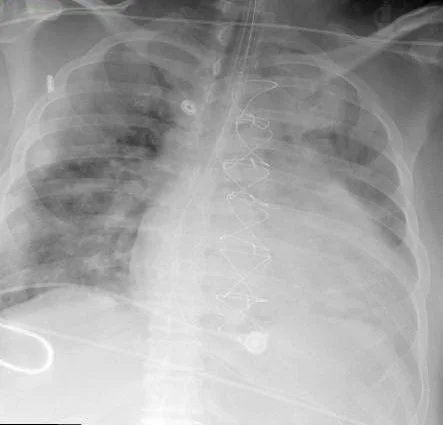Kenneth
Kenneth is a 36yo 125kg male who presented to an outside hospital with SOB and fever. He was admitted and diagnosed with ARDS, pulmonary edema, and possible pneumonia based on his CXR. He was started on antibiotics and subsequently intubated for progressive hypoxemia. He has a history of hypertension and had an aortic valve replacement with an allograft about 10 years ago for endocarditis. The Transthoracic Echo showed a EF of 60-65%, and identified no valve abnormalities. He was transferred to your center for possible ECMO for his respiratory failure. On arrival in the ICU, your ICU team makes some vent adjustments switching him to Bi-level and successfully stabilize him with a saturation of 90-94%, and with reversal of his respiratory acidosis, but over the next 12 hours he deteriorates again. Cardiology is called for possible heart failure, and renal for his renal dysfunction. Once they have collected the data below, they call you to discuss the possibility of ECMO support to stabilize his hemodynamics and gas exchange and prevent multisystem organ failure while a definitive plan is established including possible surgery.
Ventilator - RR 26, FiO2 100%, PIP 42 PEEP 15.
Vital signs - BP 140/46, HR 110.
Exam - Bilateral decreased breath sounds and rales. Mild systolic murmur, III/VI diastolic murmur. Weak peripheral pulses.
EKG - Sinus rhythm with first degree AV block, RBBB, and a short period of 2:1 conduction.
Pertinent Labs - WBC 17,000. 88% bands. BUN/CR 98/3.6. CK 1084, Trop I 2.27, BNP 529, ProBNP 17,064.
Transesophageal Echo- Hyperdynamic LV with EF of 70%. 47mm gradient across the LVOT, and moderate to severe aortic insufficiency. Valve edge irregular, but no definite vegetations identified. No pericardial effusion.
ABG - 7.34, pCO2 50, pO2 79, Bicarb 27, B.E. 0, O2Sat 95%. Lactate 3.5.

